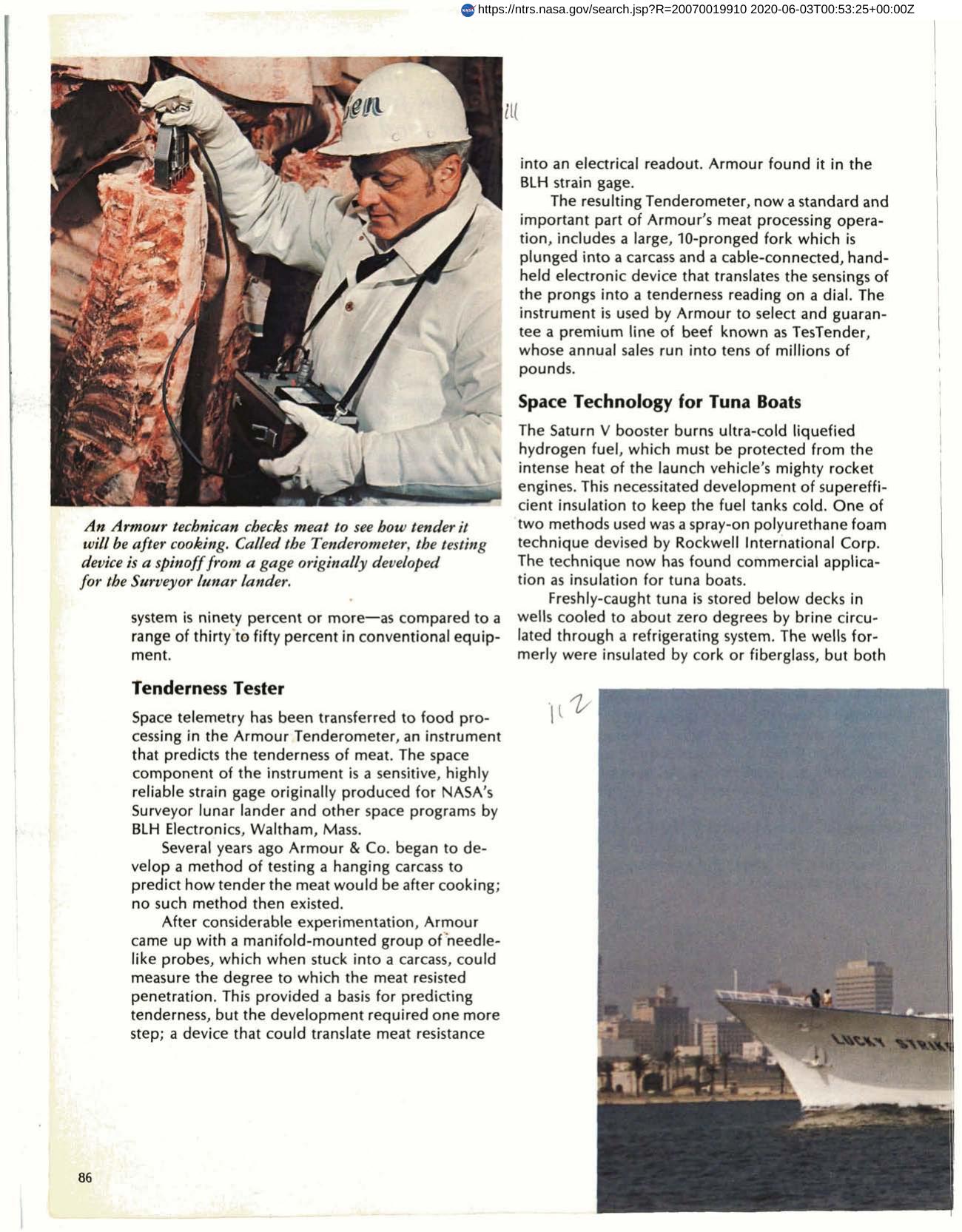
Technology for Tuna Boats
Freshly caught tuna is stored below decks in wells cooled to about zero degrees by brine circulated through a refrigerating system. Walls formerly were insulated by cork or fiberglass but both materials were subject to deterioration. Rockwell International Corporation signed a contract with NASA to commercialize this technology which derived from the Saturn V Booster. Campbell Industries was looking for a better way to insulate tuna storage wells. Campbell adopted spray foam procedure for their boats. Foam hardens after application. It is a superior insulator and is lighter and easier to apply. More than 40 foam insulated tuna boats ranging in cost from $1 million to $4 million have been built and sold.
Full article: http://hdl.handle.net/hdl:2060/20070019910

Technology for Tuna Boats

Technology for Tuna Boats













